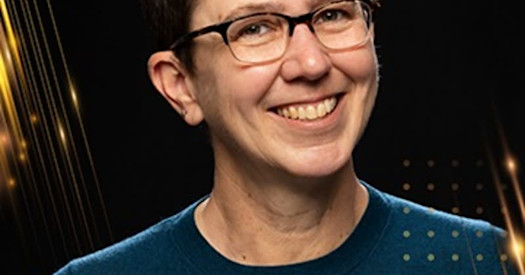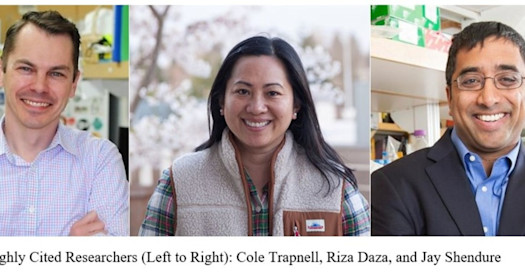Dr. Andrew Hsieh: While strides have been made since the beginning of my career in treatment of bladder cancers, it is still a terrible disease.
BBI’s Dr. Andrew Hsieh is an associate professor in the Department of Medical Oncology at the University of Washington School of Medicine, and an associate professor in the Human Biology Division at the Fred Hutchinson Cancer Center.
BBI: Dr. Hsieh, tell us a bit about your path to medicine and your field of research.
Dr. Hsieh: I am a physician scientist at Fred Hutch, which means I spend most of my time running a research laboratory, and about 10 percent of my time is seeing patients. In particular, I focus on prostate and bladder cancer patients, so I’m a genitourinary oncologist.
My path to this field started when I would visit my mom’s work as a child. She was a cytologist and I would spend time looking at cells under her microscope. To me, there was a whole world there that we couldn’t see, but that needed to function correctly for the world we can see to work properly. By the time I got to college at UC Berkeley, I was doing research in Gary Firestone’s cancer research laboratory, and later on as a Howard Hughes-funded medical student at Dana Farber under Bill Sellers. I caught the bug for using molecular and genetic tools for exploring fundamental questions about cancer biology.
Though I knew I loved research, I was also drawn to seeing the human side of disease. I volunteered at Highland Hospital in Oakland as a cancer navigator volunteer in the infusion clinic with patients getting their chemotherapy. It was there that I was exposed to the story that comes with cancer in a patient’s life. I found it profoundly moving spending time with those patients, and assisting them in a very critical time in their lives.
BBI: What were some of the early questions you were exploring in your research?
As I was deciding what direction to take, it was clear there were lots of people studying important tumor suppressor genes and oncogenes such as P53 or KRAS. I wanted to study something off the beaten path, so I got interested in looking at what happens after mRNA is made from DNA. mRNA is translated into proteins in a step called translation or protein synthesis. I was very interested in understanding how this works in normal cells, and how it gets deregulated in disease. This central question is what took me on a six-year adventure as a postdoc after my medical training.
Discoveries we have made since then have described the link between DNA transcription and mRNA translation. A lot of labs study one or the other step, while how the two are linked is still less well known. We have helped describe how the two steps have crosstalk, and how the crosstalk between transcription and translation is important in how a cell grows. We have also delved into functional genomics to determine what aspects of mRNA are important for translation. This is important because if you can understand what aspects of mRNA are important for translation, these areas of mRNA/protein interaction are potentially good therapeutic targets for new cancer drugs.
BBI: Tell us about a related project at this intersection between DNA transcription and mRNA translation.
Dr. Hsieh: We recently published a paper in Cancer Cell focused on bladder cancer, which is a particularly devastating disease for patients. Around the time I started my lab in 2014, a large compendium of bladder cancer genetic sequencing became available. What I immediately noticed looking at that dataset was that the top mutated genes implicated in those cancers were chromatin-modifiers. Chromatin is the bundle of DNA that is unwound to transcribe a specific portion of DNA into mRNA. The top gene in bladder cancer was a chromatin modifier called ARID1A.
In the last seven years, we have found that ARID1A’s main function is in the nucleus regulating transcription mostly as a tumor suppressor gene. When we knocked out ARID1A in mice, we found that indeed pro-oncogenic genes were increasingly transcribed into mRNA as one would expect with a tumor suppressor gene. However, when we aged the mice to 400 days, the mice had no tumors. This was puzzling. What eventually solved this riddle was looking at protein synthesis. We found that protein synthesis rates were actually decreased in those mice as a result of loss of ARID1A. Somehow ARID1A had a role in transcription of DNA that was pro-tumor and a role in translation of mRNA that was anti-tumor. We were surprised by these findings, but kept digging.
Eventually we figured out the mechanism of this conflicting action. ARID1A regulates the movements of nucleosomes on DNA thereby regulating transcription, and it also maintains the speed of the ribosome on mRNA transcripts. Without ARID1A, the speed of translation of mRNA into protein goes down and important genes for cancer cannot be made. This is its tumor suppressor function we call transcriptional-translational conflict. Cancer cells, however, find a way around this loss of ability to regulate speed in a way that non-cancerous cells do not. Eventually, this allows cancerous cells to upregulate transcription and support cancerous growth. This is an important example of how cancer cells adapt to extract the “good” things they want from genes and overcome the “bad” things.
BBI: What did your understanding this dual mechanism of ARID1A in patients with bladder cancer allow you to study next?
Dr. Hsieh: This got us thinking that maybe we could use small molecules to inhibit translation and stop that workaround that cancer creates when ARID1A is mutated. We used a drug to induce transcriptional-translational conflict in a similar manner to what happened in the ARID1A knock-out mice who did not develop tumors, but in a lasting manner. Indeed, we found that ARID1A deficient tumors were much more sensitive to translation inhibitors than tumors with functional ARID1A.
This story challenges the dogma that tumor suppressors are negative regulators of mRNA translation. There is much more to learn from this relatively new focus on the genes that lie at the intersection of transcription and translation. It was a new area of research when our lab started, and we are excited that it is a fruitful area for continued research. We’re actively working with clinicians here at Fred Hutch to design a clinical trial for how this might be of use in patients. While strides have been made since the beginning of my career in treatment of bladder cancers, it is still a terrible disease. It is my hope this line of research is of use one day for patients in the clinic.

 Dr. Andrew Hsieh: While strides have been made since the beginning of my career in treatment of bladder cancers, it is still a terrible disease.
Dr. Andrew Hsieh: While strides have been made since the beginning of my career in treatment of bladder cancers, it is still a terrible disease.
